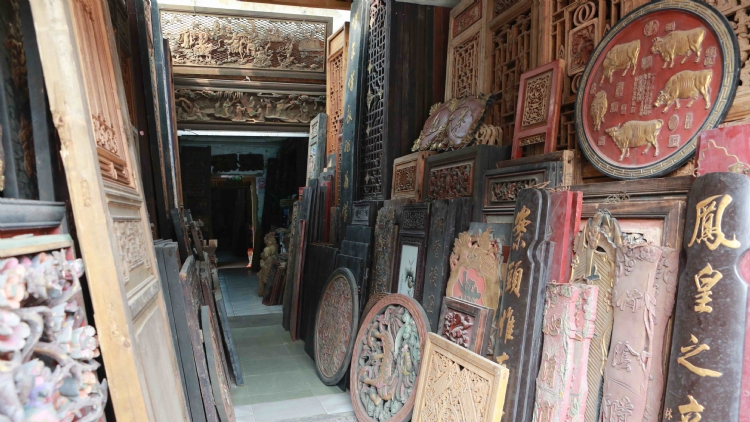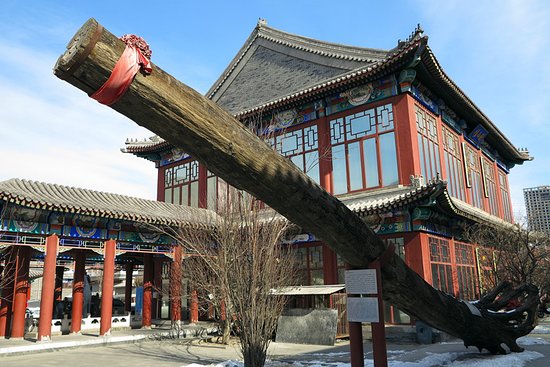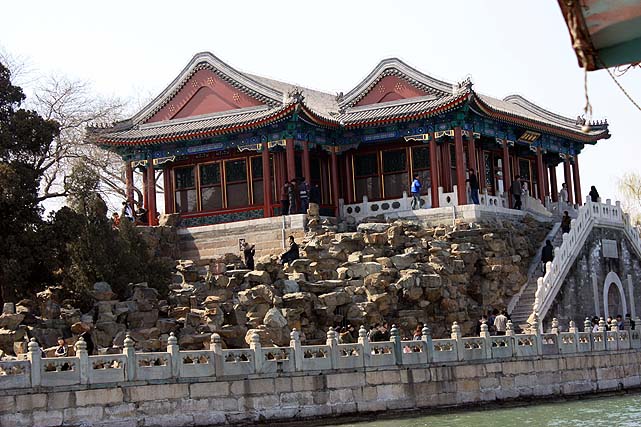At the Heart of Things
3 min readGaobeidian is a millennium-old village in the Chaoyang District of Beijing. About eight kilometers from the city proper, it is situated along the eastern extension of Chang’an Avenue, adjacent to the Beijing—Tongzhou Freeway and the Tonghui River in the north, to Guangqu Road in the south, and to the East Fifth Ring Road in the east. Here is a combined presentation of folk culture tourism, distinct foods, accommodations, shopping, recreation,and art performance.

At the Heart of Things
Once under the jurisdiction of Daxing County during the Qing Dynasty, today Gaobeidian Township, governs two villages, namely Gaobeidian and Dongdian. The Tonghui River, an important section of the Beijing-Hangzhou Grand Canal, was historically one of the pivotal thoroughfares of water transport for the citizens of Beijing. Formed alongside the river early in the Yuan Dynasty, Gaobeidian Village then served as a dock and a local The name stele 0f Gaobeidian Village.commodity distribution center. Today, a modern convenient transportation network benefits this ancient village, the closest to urban Beijing. Located between Beijing’s CBD(Centra1 Business District) and East Fifth Ring Road, it is only eight kilometers from the Tian’anmen Square in the heart of the capital. There is nearly no open space in the peripheral area of the village. North of the Village are the China Resources Hotel, Rosewood Museum, Xinglong Park, and Golf Court, and to the south is the Gaobeidian Sewage Treatment Plant. Home to the easternmost wharf of Beijing’s tourist water system, Gaobeidian is now a popular tourist destination.

The Village Stele
The name stele of Gaobeidian Village stands on the northern side of the mouth of the Tonghui Irrigation Canal, opposite to the southern tip of the Tonghui River. Ereeted in September 2004 on a pedestal 6.7 meters long, 4.3 meters wide, and 0.6 meters high, the stele measures 2.8 meters long, four meters wide, and 0.8 meters thick. It weighs 28 tons, and the stone came from Dashiwo Village, historically an imperial stone production base in Fangshan District. The pedestal is green-veined white marble, and the stele is blackland-white granite. The facade of the stele is engraved with “Gaobeidian Beijing” in both Chinese and English. Inlaid in the stele is a white marble, 1.36m x 0.6m, displaying a 295—character inscription of village chronicle.
The village name stele is in the shape like an ancient cooking vessel, similar to the shape of the village, and the Villagers especially chose black-and—white granite to imply clear division of right and wrong. The pyramid-shaped arrangement of the inscription characters symbolizes an eternal glory. At the foot of the stele are three stones, implying steadiness, and the five stones composing the main body of the stele imply the unity of villagers. The head of the stele comprises of five stones. symbolizing east, south, north, west, and center, respectively, or five colors, five tastes. five grains, and as a whole the stele head resembles a ship sailing to the future.
In total, the entire stele consists of 13 stones, representing 13 classics contributing to the traditional Chinese culture: The Book of Changes, Book of History, Classic of Poetry,
Rites of Zhou, Etiquettes and Rites, The Rites, Spring and Autumn Annals and T50 Commentary, Commentary of Gongyang, Commentary of Guliang, The Analects of Confucius, The Classic of Filial Piety, Erya Dictionary, and‘Mencius. These 13 classics, broad and profound, are especially valuable for the study of the development and cultural traits in the fields of politics, military, religion, economy, philosophy, ethic, and folk customs.









